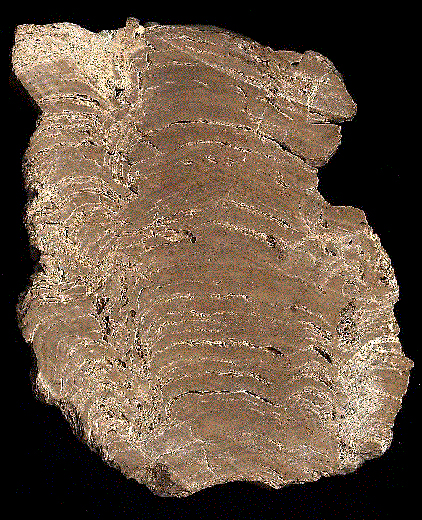The Significance of Stromatolites Outlined in New Blog Post
Praising Stromatolites
As Everything Dinosaur’s focus is on the Dinosauria, just one part of the vertebrate family tree, a tiny portion of the Phylum Chordata, we occasionally get reminded, usually by invertebrate palaeontologists or those scientists that specialise in studying micro-fossils, about the varied and diverse fossils of the Proterozoic Eon and the early part of the Phanerozoic (the eon of visible life). Today, we would like to focus on one group of highly significant fossils from the Paleoproterozoic onwards, stromatolites.
What is a Stromatolite?
The term stromatolite means “layered rock”, these are solid, rocky structures created by the activity of colonies of single-celled bacteria, mostly cyanobacteria, which were formerly known as blue-green algae. The bacteria live in mats at the top of the structure and they are very primitive organisms, whose fossil record dates back as far as 3.7 billion years, possibly (see note below*). Cyanobacteria are classified as prokaryotes, that is, they lack a nucleus and although regarded as “simple” forms of life, they were ultimately responsible for one of the most significant changes to our planet that permitted more complex life to evolve.
Stromatolites photosynthesise, they use the sun’s energy to make food. As the stromatolites absorb sunlight they are able to break the chemical bonds in water releasing oxygen. At first, this free oxygen, reacted with the iron rich water to create iron oxides (rust) which formed the bands of iron ore that is mined today.
Stromatolites Producing Oxygen
Eventually, all the iron in the water was combined with oxygen, but the stromatolites kept producing oxygen as a by product of photosynthesis and it was this oxygen that began to increase the concentration of O2 in the atmosphere. This led to the Great Oxygenation Event (GOE) which increased the level of atmospheric oxygen, forming the ozone layer helping to protect the Earth from harmful cosmic rays. The increased oxygen permitted more biological diversification and speeded up the radiation of the eukaryotes (organisms with a nucleus) and the evolution of multi-cellular lifeforms.
The cyanobacteria form structures by trapping sediment with their sticky surface coatings. The trapped sediment reacts to calcium carbonate in the water to form limestone. These limestone deposits build up extremely slowly, it has been calculated that one centimetre of structure takes around 25 years to be laid down.
For models and replicas of ancient life: Safari Ltd Prehistoric Animal Models and Replicas.
Shark Bay – The Most Westerly Point of Australia
The famous Shark Bay, the most westerly point of Australia, is one of the few places in the world where hypersaline conditions occur to permit the unrestricted growth of the cyanobacteria colonies. The stromatolites are found around the shallows of Hamelin Pool, which is located in the southern part of the bay area.
Around 5,000 years ago, a huge bank of seagrass called the Fauré Sill began to impede the tidal flow into the bay, this led to a build up of salt in the water. The hypersaline conditions prevent most other types of marine animal from surviving, so the cyanobacteria have essentially, no predators. This area is one of the planet’s best examples of a living analogue for the study of life prior to the Cambrian faunal explosion.
This part of Western Australia’s coastline has been granted UNESCO World Heritage status.
A Cross section of a Stromatolite Colony Preserved in the Fossil Record
In the rock record, stromatolites can be recognised by characteristic laminar structures, (layers). This is a cross section of a fossilised columnar stromatolite, it is very similar to those structures found in Shark Bay.
*Back in the early autumn of 2016, Everything Dinosaur published an article about some new research that suggests cyanobacteria colonies could have existed some 3, 700 million years ago. To read our article on this recently published scientific paper: Ancient Microbial Structures 3.7 Billion Years Old.
Article about the Great Oxygenation Event (GOE): Fossilised Bacteria Shed Light on Life Before Oxygen.
Our thanks to all the cyanobacteria for helping to create the conditions to permit more complex life to evolve.
Visit the Everything Dinosaur website: Everything Dinosaur.


